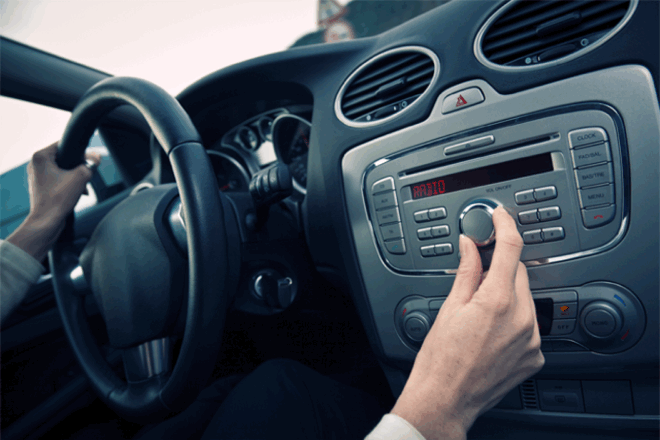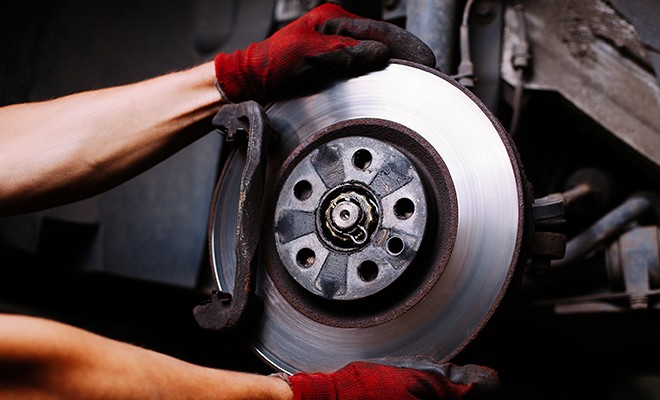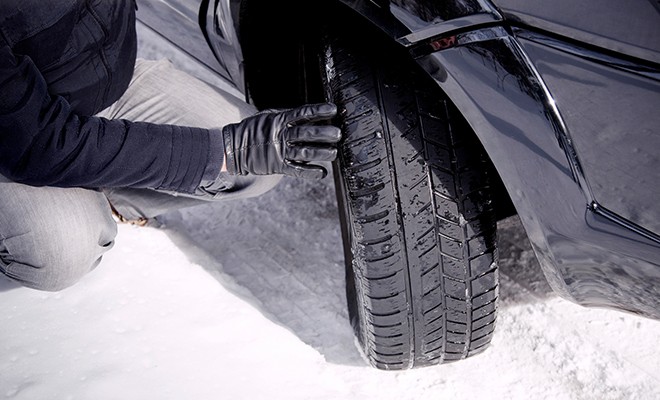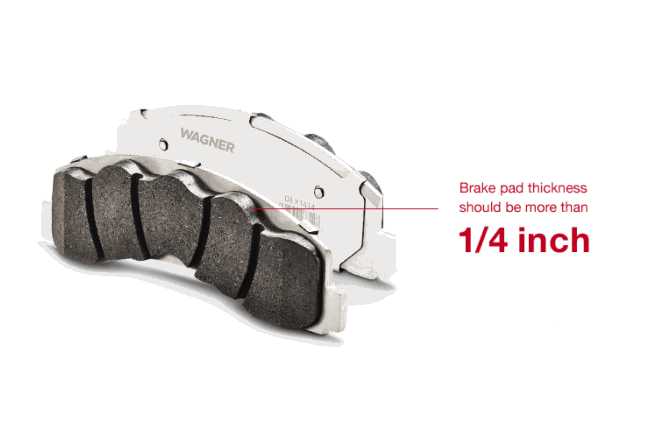SNOW, ICE AND SLEET - OH MY!
From snow and ice to sleet and freezing rain, winter driving can be challenging. On these slick surfaces, having properly working brakes becomes more important than ever. There is nothing more unnerving than the feeling of your car slipping on ice and you struggling to bring your car to a stop.
During the cold winter months, keeping an eye on the performance of your brakes is paramount to safely navigating in the snow and ice. Because of the freezing temperatures, you likely keep your windows rolled up and may not hear some of the warning signs of failing brakes. Read on to learn how to monitor your brakes.
TURN THE RADIO OFF – LISTEN CLOSELY

With the windows rolled up, it can be hard to hear any noises that your car is making in the winter. It is imperative that you take the extra effort to hear what is going on with your vehicle.
Prior to the winter driving season and periodically throughout winter, turn off the radio, turn down the blower on the heater/defroster and just listen to your car as you drive down the road. Listen carefully for any new or unusual sounds. If possible, crack your window to hear the sounds even better.
Pay extra attention to your brakes, if you hear any of the following noises, take your car to your trusted mechanic as soon as possible. Your brakes are one of the most important safety systems on your vehicle – you don’t want to take any chances with the safety of you and your passengers.
SQUEALING OR SQUEAKING

If you hear a squealing or squeaking sound, it can be the first warning signal that your brake pads are beginning to show signs of wear. Don’t hesitate in taking your vehicle to your mechanic. Getting your car in early can make the difference between just replacing the brake pads and making more extensive repairs. Waiting could cost you more money.
GRINDING OR GROWLING
A grinding or growling sound when you press down on the brake pedal is a sign of something more serious. This typically means that the brake pads have worn through and now are grinding into the rotor. Aside from sounding awful, grinding or growling brakes leads to metal on metal contact – you have no braking material left. If you experience this, immediately take your vehicle in. The longer you wait, the more dangerous it is for you to drive your vehicle.
DO A VISUAL INSPECTION

Conducting a visual inspection of your brakes is another good way to determine how they are wearing. First, take a look at the brake dust accumulation in the wheels. As your brake pads wear, there will be less dust buildup. Seeing less dust accumulation can be a sign that your brake pads need replacing.
Next, examine the brake pads. On most vehicles, you can see the brake pad through the wheel. To check the life of the brake pad, you need to determine its thickness. If it looks thin, less than 1/4", it might be time to get them replaced. On some brake pads, you might see a wear indicator slot down the center of the pad. If the slot is barely visible, then it’s likely time for new brake pads.

If you discover anything concerning, get your vehicle into the repair shop promptly. Once your mechanic inspects it, they’ll be able to determine what repairs are needed to get you back on the road.
Learn more about quality brake parts, find your car part, or find where to buy your auto part today.
The content contained in this article is for entertainment and informational purposes only and should not be used in lieu of seeking professional advice from a certified technician or mechanic. We encourage you to consult with a certified technician or mechanic if you have specific questions or concerns relating to any of the topics covered herein. Under no circumstances will we be liable for any loss or damage caused by your reliance on any content.